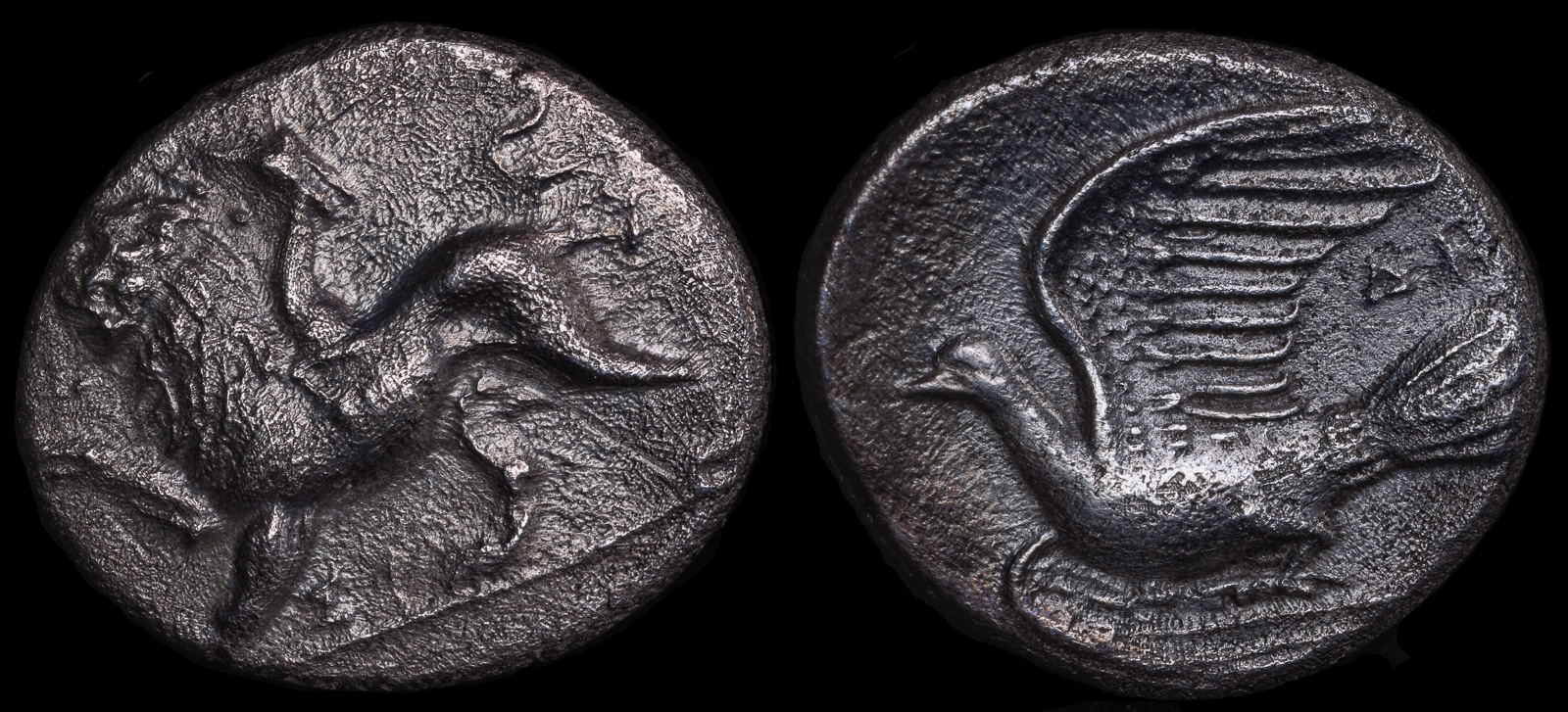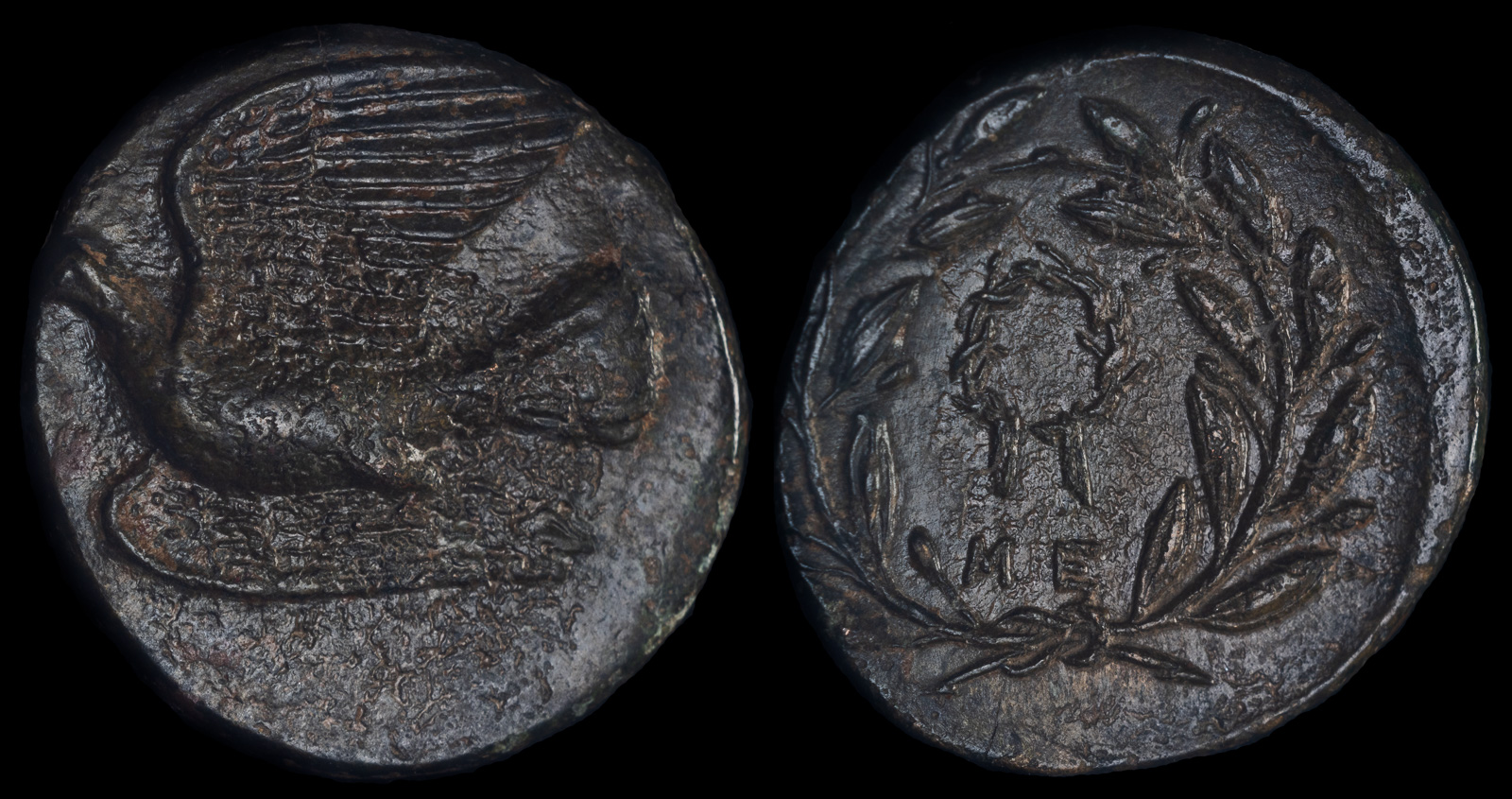
Circa 330-280 BCE
AE Triobol 15,5 mm, 2.72 g, 6 h
ΣΙ Chimera standing left with right forepaw slightly raised.
Rev. Dove flying left; above tail feathers, ΔΙ.
HGC 5, 213. BCD Peloponnesos 299
Sikyon was one of the major players around Greece in ancient days, and Pausanias goes into depth to list the twenty-six ancient kings of the city, ending with Agamemnon of Homeric fame. For much of its history it remained on the side of Sparta. In fact, during times of need its currency was often used by its ally – especially during the Peloponnesian War. Sparta did not mint coins during this time.

Circa 330-310/05 BCE
Tetrachalkon Bronze, 17.5 mm, 3.25 g, 5 h
Dove flying to right
Rev. Small Θ within laurel wreath tied bellow
BCD Peloponnesos 307.7. Traité II, 813, pl. 222, 14. Warren, group 5, 6i
During the 4th century BCE, numerous artists hailed from the city. Easily the top painters throughout Greece practiced or learned there, though none of their original works remain. The sculpture Lysippos was from Sikyon and is considered one of the three greatest ancient sculptors. Most of the works known from him today are copies, with the possible exception of one piece in the Getty Museum. One of his pupils, Chares of Lindos, created the Colossos of Rhodes which was one of the seven ancient wonders of the world.

330-310/05 BCE
Æ Dichalkon 16mm, 2.29g, 1h
Dove flying l. R/
EY within wreath tying below.
BCD Peloponnesos 305.6
Lysippos was also the personal sculptor of Alexander the Great. Of the painters, we believe we have some copies of Apelles’ works in Pompeii, including a famous painting of Alexander the Great in the Battle of Issos.
In 323 BCE, democracy was introduced to Sikyon, but it would be short lived. As a consequence of the Lamian War, Macedonia took control. From 314 to 308 BCE, Sikyon was nominally independent under Kratesipolis, the wife of the former Macedonian commander. She ruled herself for six years before Ptolemy I convinced her to hand over the city to her.

Circa 330-310/05 BCE
Æ Dichalkon
Dove flying right /
Wreath above ME; all within wreath.
Warren, Bronze group 5, series 1, 3a; BCD Peloponnesos 309-10; SNG Copenhagen –
Sikyon remained under Lagid control until it was conquered by Demetrios I Poliorketes in 303 BCE. Most of the original city was destroyed and then rebuilt. After his death, the city wavered between tyrants and democracy until Rome took over.